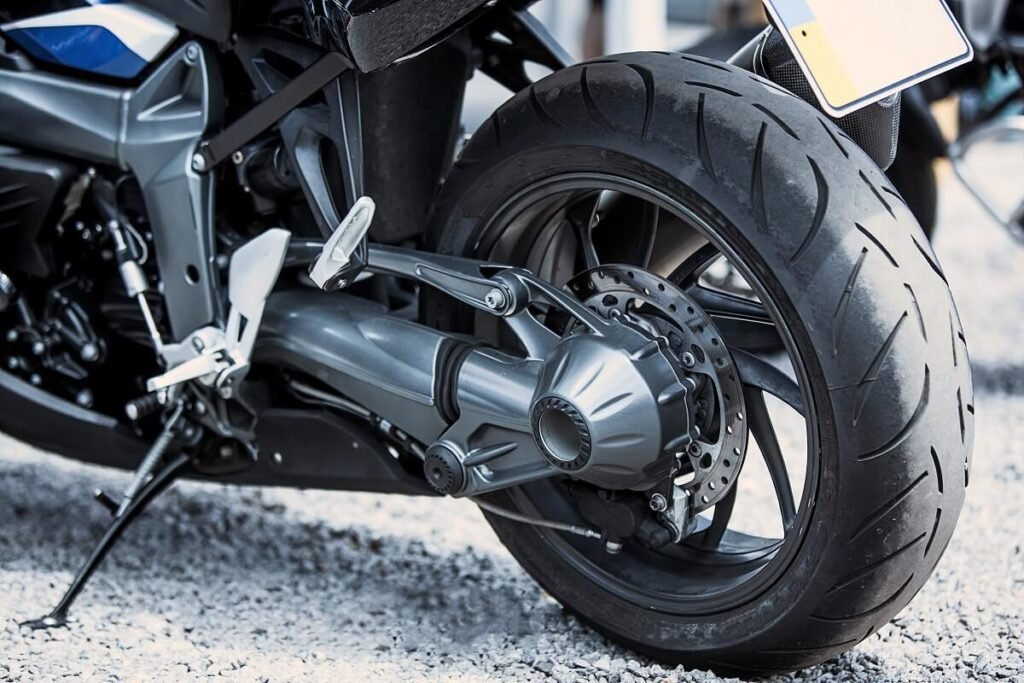
Since the Roman occasions, various liquids, including water, have been used as lubricants to limit the disintegration, warmth, and wear between mechanical parts in contact with each other. Today, greasing up oil, or lube oil, is the most regularly used oil because of its wide extent of potential applications. The two crucial classes of lube oil are mineral and manufactured. Mineral oils are refined from regularly happening oil or foul oil. Engineered oils are manufactured polyalphaolefins, which are hydrocarbon-based polyglycols or ester oils.
Notwithstanding the way that there are various sorts of lube oils to peruse, mineral oils are the most ordinarily used because the gracefully of crude oil has rendered them economical; additionally, a gigantic collection of data on their properties and use starting at now exists. Another favored situation of mineral-based lube oils is that they can be made in a wide extent of viscosities—thickness implies the substance’s assurance from the stream—for different applications. They go from low-consistency oils, which involve hydrogen-carbon chains with subatomic heaps of around 200 atomic mass units (AMU), to incredibly thick lubricants with sub-nuclear loads as high as 1000 amu. Mineral-based oils with different viscosities can even be combined to improve their introduction in a given application. The normal 1OW-30 engine oil, for example, is a blend of low thick oil (for basic beginning at low temperatures) and gooey oil (for better engine security at customary fevers).
First used in the plane business, engineered lubricants in UAE are regularly gotten ready for a specific application to which mineral oils are ill-suited. For example, synthetics are used where high working temperatures are experienced or where the lube oil must be flame resistant. This article will focus on mineral-based lube oil.
Rough Materials
Lube oils are just one of various parts, or portions, that can be gotten from raw petroleum, which ascends out of an oil well as a yellow-to-dull, burnable, liquid mix of thousands of hydrocarbons (regular blends containing just carbon and hydrogen particles, these occur in each and every oil-based commodity). Oil stores were formed by the breaking down of little plants and animals that lived around 400 million years earlier. As a result of climatic and land changes happening around then in Earth’s history, the breakdown of these living things moved from region to territory.
Considering the different rates at which characteristic material decayed in various spots, the nature and level of the subsequent hydrocarbons move extensively. Along these lines, so do the physical and engineered qualities of the grungy oils isolated from different regions. For example, while California grungy has a specific gravity of 0.92 grams/milliliter, the lighter Pennsylvania unpleasant has a specific gravity of 0.81 grams/milliliter. (Unequivocal gravity, which suggests the extent of a substance’s weight to that of a proportional volume of water, is a critical piece of foul oil.) Overall, the specific gravity of crudes heads off to someplace in the scope of 0.80 and 0.97 grams/milliliter.
Contingent upon the application manufactured mixes called included substances may be mixed with the refined oil to give it needed physical properties. Essential included substances incorporate metals, for instance, lead or metal sulfide, which update lube oil’s ability to abstain from bothering and scoring when metal surfaces come in contact under high loads. High-nuclear weight polymerics are another essential included substance: they improve consistency, neutralizing the tendency of oils to thin at high temperatures. Nitrosamines are used as disease avoidance operators and utilization inhibitors since they slaughter acids and structure cautious motion pictures on metal surfaces.
The Manufacturing Process
Lube oil is separated from crude oil, which encounters a primer purification process (sedimentation) before it is directed into fractionating towers. An ordinary high-profitability fractionating tower, 25 to 35 feet (7.6 to 10.6 meters) in separation across and up to 400 feet (122 meters) tall, is worked of high assessment prepares to contradict the dangerous blends present in harsh oils; inside, it is fitted with a rising plan of condensate gathering plate. Inside a zenith, the tremendous number of hydrocarbons in grungy oil are secluded from each other by a method called halfway refining. As the fumes climb through the zenith, the various divisions cool, merge and return to the liquid structure at different rates controlled by their specific boiling focuses (the lower the boiling purpose of the part, the higher it rises before consolidating). Vaporous petroleum accomplishes its boiling point first, trailed by gas, light oil, fuel oil, lubricants, and tars.
Sedimentation
- The foul oil is shipped from the oil well to the treatment facility by pipeline or big hauler convey. At the processing plant, the oil encounters sedimentation to empty any water and solid contaminants, for instance, sand and shake, that may be suspended in it. During this method, the grungy is directed into gigantic holding tanks, where the water and oil are allowed to detach and the contaminants settle out of the oil.
Fractionating
- Next, the crude oil is warmed to around 700 degrees Fahrenheit (371 degrees Celsius). At this temperature, it isolates into a mix of hot fume and liquid that is then guided into the base of the first of two fractionating towers. Here, the hot hydrocarbon fumes float upward. As they cool, they combine and are assembled in different plates introduced at different measurements in the zenith. In this zenith, common natural weight is looked after consistently, and around 80 percent of the crude oil disintegrates.
- The remaining 20 percent of the oil is then warmed and directed into a second pinnacle, wherein vacuum weight cuts down the extra oil’s boiling point with the objective that it will in general be made to disintegrate at a lower temperature. The heavier blends in with higher boiling focus, for instance, tar and the inorganic blends, stay behind for additional preparation.
Separating and dissolvable extraction
- After further handling to remove unwanted heightens, the lube oil that has been accumulated in the two fractionating towers has adhered to a couple of ultrafine procedures, which empty outstanding corruptions. Aromatics, one such contaminant, contain six-carbon rings that would impact the lube oil’s thickness if they weren’t ousted in a methodology called dissolvable extraction. Dissolvable extraction is possible because aromatics are more dissolvable in the dissolvable than the lube oil division is. Exactly when the lube oil is treated with the dissolvable, the aromatics separate; later, after the dissolvable has been removed, the aromatics can be recovered from it.
Included substances, assessment, and bundling
- Finally, the oil is mixed with added substances to give it the perfect physical properties, (for instance, the ability to withstand low temperatures). Presently, the lube oil is presented to an arrangement of significant worth control tests that assess its thickness, express gravity, concealing, flicker, and fire focuses. Oil that satisfies quality rules is then packaged accessible to be bought and transported.
Quality Control
Most usages of lube oils require that they be non-resinous, pale-tinted, unscented, and oxidation-safe. More than twelve physical and substance tests are used to gather and decide the assessment of greasing up oils. Essential physical tests incorporate appraisals for consistency, unequivocal gravity, and concealing, while basic substance tests incorporate those for blast and fire focuses.
Of the extensive number of properties, consistency, a lube oil’s security from the stream at express temperatures and loads, is likely the absolute most huge one. The application and working temperature extend are key factors in deciding the best conceivable consistency for an oil. For example, if the oil is exorbitantly thick, it offers a great deal of assurance from the metal parts moving against each other. On the other hand, in case it not gooey enough, it will be squashed out from between the mating surfaces and won’t in all probability oil up to them sufficiently. The Saybolt Standard Universal Viscometer is the standard instrument for deciding the consistency of oil lubricants producer in Dubai someplace in the scope of 70 and 210 degrees Fahrenheit (21 and 99 degrees Celsius). Consistency is evaluated in the Say shock Universal second, which is the time in seconds required for 50 milliliters of oil to deplete out of a Saybolt viscometer cup through a balanced chamber opening at a given temperature.
The specific gravity of oil depends upon the refining system and the sorts of included substances present, for instance, lead, which empowers the lube oil to contradict phenomenal mating surface weight and cold temperatures. The lube oil concealing demonstrates the consistency of a particular assessment or brand. The oil’s blast and fire focus vacillate with the crude oil’s inception. The flicker point is the temperature to which oil must be warmed until a satisfactory burnable fume is driven off so it will streak when conveyed into contact with fire. The fire point is the higher temperature at which the oil fume will keep on devouring when ignited.
Essential 15W40 Engine Oil is described by thickness and execution as per judgments set up by the Society of Automotive Engineers (SAE). Execution components incorporate wear neutralizing activity, oil overflow store course of action, and oil thickening.

Top 5 Tips for Starting Online Makeup Store in Pakistan

मोटरसाइकिल लोन पर ब्याज दर कम कैसे करें

How to get free Bitcoin with sMile application

5 Brilliant Ways To Use A PEMF MAT

मोटरसाइकिल लोन पर ब्याज दर कम कैसे करें

Lucknow and Ahmedabad can target these 5 players in the mega auction 2022

Use a Wooden Wall Clock to Spruce up Your Interior

